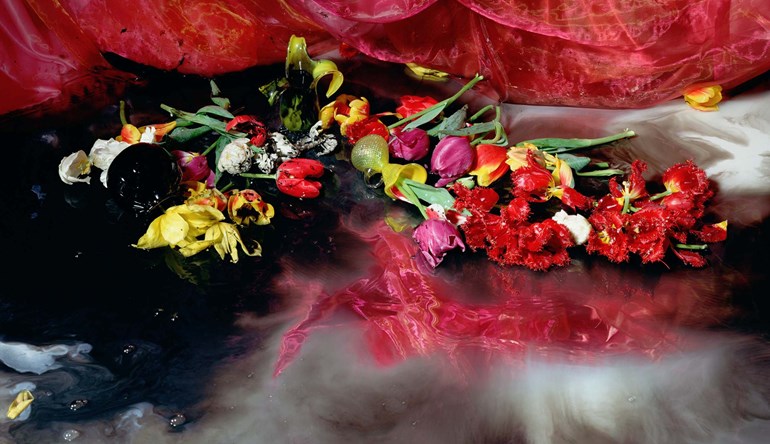Come to me
Death of a Siren
2010, 150 cm x 260 cm and 115 cm x 200 cm
“Admirable instrument invented by the supreme master”
Leonardo da Vinci
My business is the human heart, that 450 gramme lump of magical pulsating muscle that beats in all our breasts. Credited with improbable powers, the heart is seen as the very centre of all our emotions, the subject of endless poetry, prose and music. Its very motion inside our chests ebbs and flows with our changing psychology, reflecting and indeed heightening our sensation of the world around us; bounding with love or pounding with fear, we cannot escape its domination of our being. Leonardo wrote, “Of the heart: This moves of itself and does not stop unless forever. And there’s the thing: without it we are nothing.
Cradling the heart of another human being in my hands, my own heart races sometimes with apprehension and at other times with pleasure as yet another complex lesion is corrected and another life restored. Occasionally however there is disaster. It cannot be helped and refuses to work. Life ceases for a fellow human being. For that man or woman and for their family the moment is catastrophic. For the surgeon a sense of abject failure and frequently utter exhaustion, physically but emotionally too. This moment I see in the singularly powerful image “Death of a Siren” a most powerful evocation of that moment, created by Margriet Smulders, whose very heart I have cradled in my own hands.
The fallen and scattered flowers, spilling their life blood as they are swallowed up by the blackness of death is both heart-rending and final. It is the way of all natural things but here death is premature and shocking. The blood is draining away and with it the beauty of life. The scarlet velvet of the coffin lowers over the scene, there is no way back. Thankfully in my work this is a very rare event. A happier outcome is the rule and an extended and more active life is achieved. Joyous epistles of thanks and news of fresh achievements are the order of the day. This which is why I am curious as to the stimulus for such a work.
This image is in stark contrast to all other works that I have seen by Margriet. Awash with colour they are quite breathtaking in their beauty and frequently exude an air of optimism and happiness. This work seems deeply and pessimistically introspective, the violence of uncontrolled personal loss, perhaps the realisation of an unattainable love, the emergence of deeply suppressed dark thoughts. I have often witnessed in my patients that the recovery from stress can produce such a reaction; depression is common following traumatic events of all kinds of which heart surgery is but one. Grown men weep after such events and hallucinations are common. As with the dawn of days the mood lightens and all dark thoughts are left behind. The optimism of the gift of a new day, a life renewed regains its pre-eminence in our psyche. This viewer wants to see the whiteness push back the black, the vases standing upright and the still vibrantly colourful flowers restored to grace. I have instilled in me the proclamation ‘never stop operating no matter what the difficulty until all that can be done has been done - and then try harder’. With ill-concealed effort the blackness can be replaced with fresh eyes and a courageous heart.
“Never say you know the last word about any human heart”
Henry James
"The heart has its reasons of which reason knows nothing"
Blaise Pascal
Francis Wells
Francis Wells is a consultant cardiothoracic surgeon at Papworth Hospital, Cambridge and an associate lecturer at the University of Cambridge. He completed many years work on the anatomical drawings of Leonardo da Vinci, focusing particularly on the heart. In 2005 he performed open-heart surgery on Margriet Smulders

